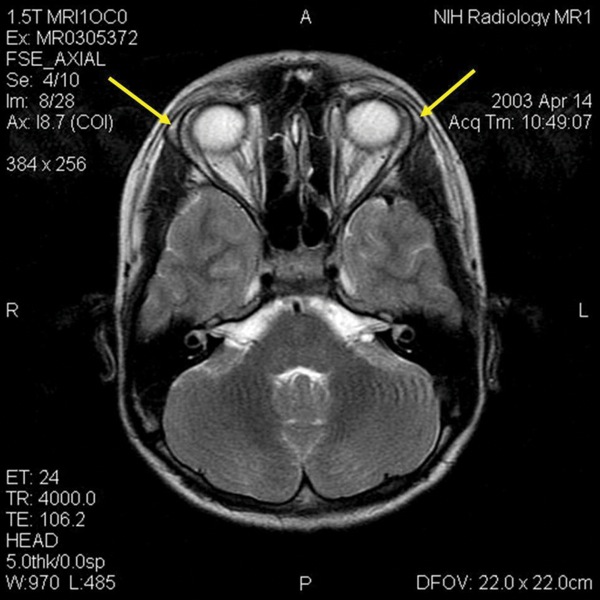Anesthesiology News
Allgrove Syndrome: What Is It?
Allgrove syndrome, also known as triple A syndrome, is an inherited condition that encompasses achalasia; addisonianism, which is primary adrenal insufficiency; and alacrima, which is insufficient tear secretion. The syndrome was first identified by Jeremy Allgrove and his colleagues in 1978; it is a rare autosomal recessive congenital progressive disorder, usually without any family history.1 Gazarian et al suggested that autonomic and other neurologic abnormalities also might be associated with the syndrome classified as 4A.2
Incidence
Because the only available literature consists of mainly case reports, the incidence of the syndrome is unknown. Allgrove syndrome affects both males and females equally and has been described in most races. Although it is typically diagnosed early in life, with alacrima being the first disorder noted, later manifestations in older patients also have been reported.
Diagnosis
Diagnosis may be difficult, as symptomatology and genetic variations are variable. Allgrove syndrome usually appears in children whose symptoms include lack of tears, recurrent vomiting, dysphagia, severe hypoglycemia with seizures and shock. Neurologic changes such as ataxia, upper and lower motor neuron abnormalities, weakness, optic atrophy and mental retardation occur later.3 Genetic testing mutations have been identified but are variable. Triple A syndrome is caused by mutations in the AAAS gene, which encodes the protein ALADIN (for alacrima, achalasia, adrenal insufficiency, neurologic disorder) and the ACTH receptor genes.4 Several pathogenic variants of the AAAS gene have been described.5 The syndrome has been mapped to a 6-cM interval on human chromosome 12q13 near the type II keratin gene cluster.6
Treatment
Replacement of glucocorticoids in patients with known adrenal insufficiency is critical to avoid an adrenal crisis and to allow for normal growth in children. Growth must be closely monitored because overtreatment with glucocorticoids impairs linear development. Otherwise, treatment is symptomatic. Achalasia usually is managed surgically (i.e., Heller myotomy). Physical therapy also may prove beneficial.7 Lubricants help manage alacrima.
Anesthetic Precautions
Patients usually present for a laparoscopic or, more recently, peroral endoscopic myotomy.8 They may also undergo nerve biopsies for diagnostic purposes. Consent may be hampered by deafness, dysarthria, blindness or mental retardation. Short stature and microcephaly may compromise airway management. Autonomic sensory and motor abnormalities should be documented. Spastic tetraparesis may make IV cannulation difficult. Postural hypotension and intraoperative lability are common, requiring early treatment with vasopressors. Preoperative hydrocortisone is essential. Hypoglycemia should be anticipated and managed. Nerve conduction is prolonged, and muscle relaxants should be used with caution, if at all. Preoperative antacids are indicated. Inhalation or IV techniques may be preferable to neuraxial blocks because of inconsistent and developing neurologic changes.
References
- Allgrove J, Clayden GS, Grant DB, et al. Familial glucocorticoid deficiency with achalasia of the cardia and deficient tear production. Lancet. 1978;1(8077):1284-1286.
- Gazarian M, Cowell CT, Bonney M, et al. The “4A” syndrome: adrenocortical insufficiency associated with achalasia, alacrima, autonomic and other neurological abnormalities. Eur J Pediatr. 1995;154(1):18-23.
- Jerie M, Vojtech Z, Malikova H, et al. Allgrove syndrome with prominent neurological symptoms. Case report. Neuro Endocrinol Lett. 2016;37(3):184-188.
- Nakamura K, Yoshida K, Yoshinaga T, et al. Adult or late-onset triple A syndrome: case report and literature review. J Neurol Sci. 2010;297(1-2):85-88.
- de Freitas MRG, Orsini M, Ara≥jo APQC, et al. Allgrove syndrome and motor neuron disease. Neurol Int. 2018;10(2):7436.
- Huebner A, Yoon SJ, Ozkinay F, et al. Triple A syndrome—clinical aspects and molecular genetics. Endocr Res. 2000;26(4):751-759.
- Adams JT. Clinical decision making and application of an active rehabilitation program for a person with the neuromuscular symptoms of Allgrove syndrome: a case report. Physiother Theory Pract. 2018;3:1-8.
- Nakamura J, Hikichi T, Inoue H, et al. Per-oral endoscopic myotomy for esophageal achalasia in a case of Allgrove syndrome. Clin J Gastroenterol. 2018;11(4):273-277.



Leave a Reply
You must be logged in to post a comment.